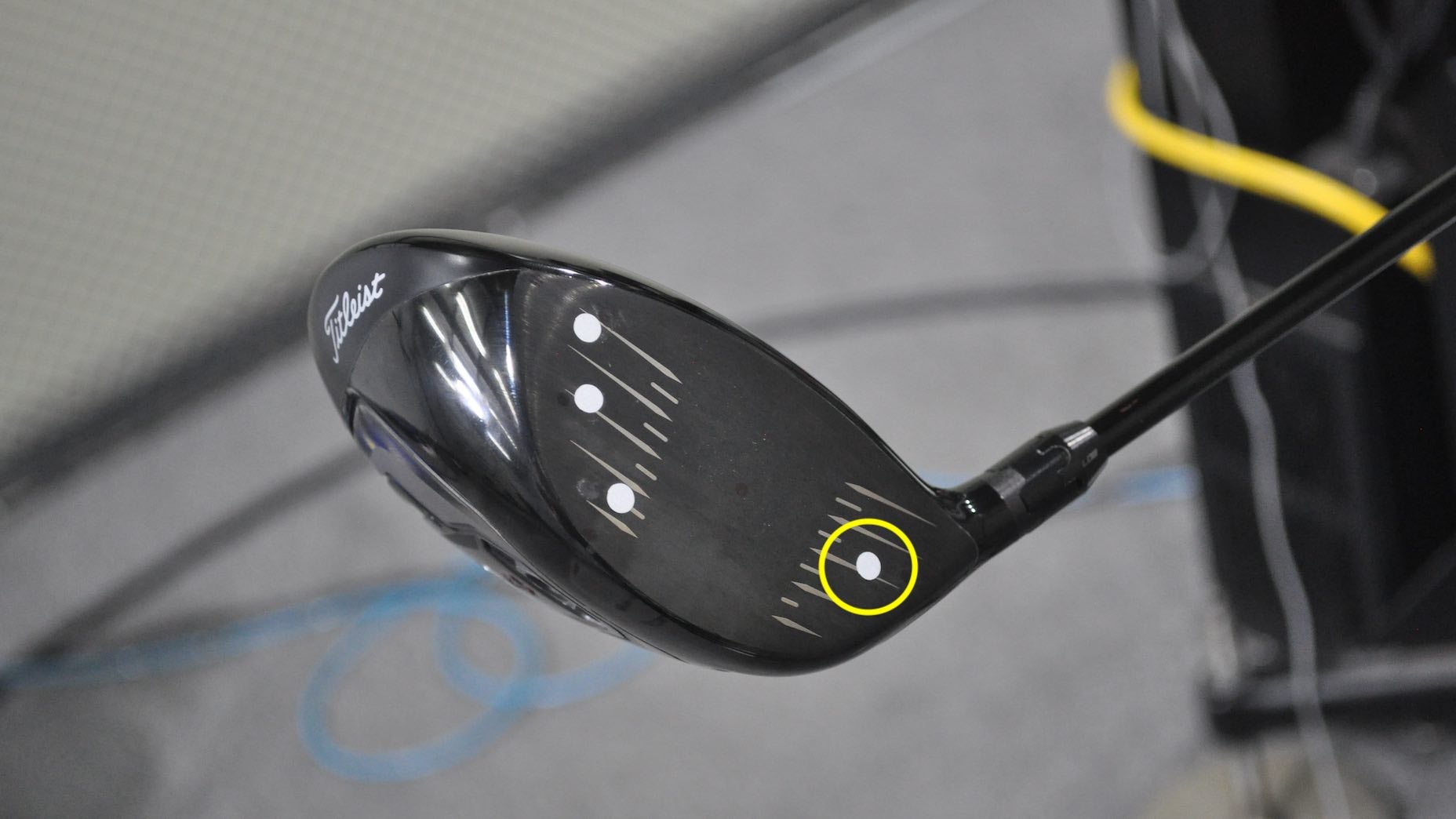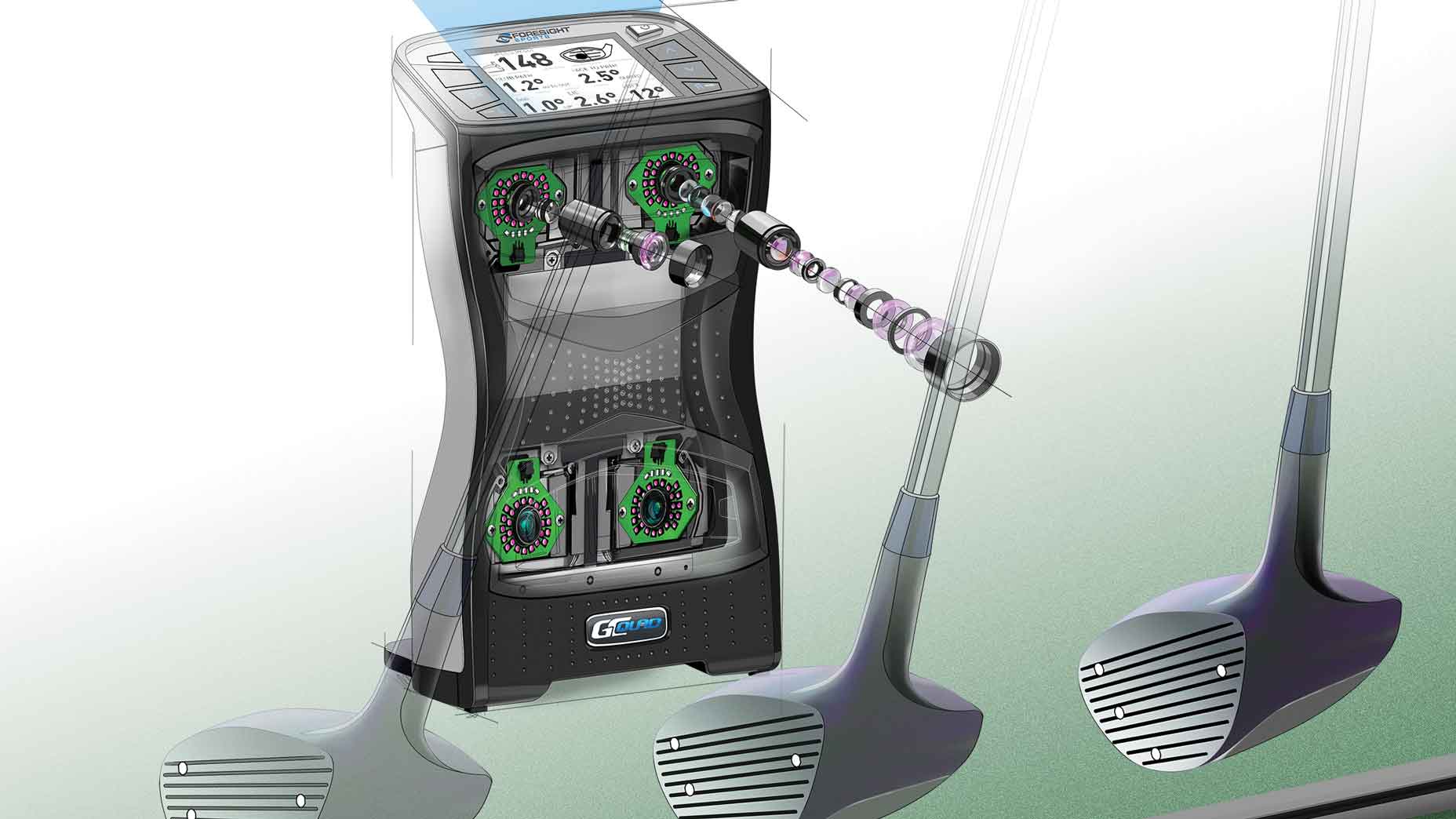
Foresight uses reflective stickers — also known as fiducials — to capture club data.
Jonathan Wall/GOLF.com
Rory Sabbatini was disqualified from the RSM Classic on Thursday for using a fairway wood with “a non-conforming external attachment to the face,” which was later revealed to be an adhesive reflective dot produced by Foresight Sports.
It’s possible adhesive face stickers exist that improve performance, but in Sabbatini’s case, the tiny reflective dot, also known as “fiducials” or “club markers,” had no effect on performance.
The obvious follow-up question is why did Sabbatini have the dot on the face in the first place? To answer this question, let’s take a look at Foresight Sports’ popular GCQuad — a launch monitor that utilizes four super-speed cameras to ensure high-level capture at 10,000 frames per second. If you want ball data (speed, carry, launch, spin axis, total spin, etc.), simply fire up the unit, grab a club and get to work.
But what happens if you want club data as well? Understanding how the face is moving through space is an important piece of the puzzle that GCQuad can also capture, provided you have the same reflective face markers that caused Sabbatini to head home after one round.
“The optical technologies Foresight creates utilize photoluminescent fiducials (stickers) that reflect light and allow our multi-camera optical system to pinpoint the precise coordinates of various points on the clubface,” said Tim Briand, Foresight’s director of business development. “They are needed to ensure the most accurate and precise impact data regarding the orientation of the face.
“Foresight’s ability to precisely identify club delivery and ball launch metrics is one of the primary drivers behind our widespread tour adoption, and a large reason why a majority of the PGA Tour has converted into our technology.”
In other words, if you want to see the whole picture, you need the reflective dots to capture the face. (If you’re curious, Foresight offers 192 club markers for $45 on its website.)
According to Briand, the dots can be oriented in one of two ways to capture club data. The 1-dot mode — meaning one sticker placed on the face — gives clubhead speed, angle of attack and path, while the 4-dot mode enables full face data capture.
It’s unclear which mode Sabbatini was using, but it’s likely he tested the fairway wood on the range at Sea Island and then forgot to remove it before the first round. An easy mistake to make.
Here’s hoping the fairway wood data he received from the test session is beneficial down the road.
Want to overhaul your bag for 2022? Find a fitting location near you at GOLF’s affiliate company True Spec Golf. For more on the latest gear news and information, check out our latest Fully Equipped podcast below.









